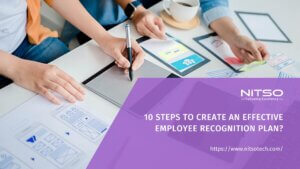Are you struggling to navigate the complex challenges faced by HR professionals in today’s rapidly evolving business landscape? In a highly competitive and dynamic environment, effective human resource management has become a crucial differentiator for organizational success. HR professionals in India are tasked with addressing a myriad of challenges, from attracting and retaining top talent to fostering a diverse and inclusive workforce, ensuring legal compliance, cultivating a positive organizational culture, and leveraging technology and data analytics.
According to a recent survey by the Society for Human Resource Management (SHRM), talent acquisition and retention ranked among the top concerns for HR professionals in India. Moreover, a study by Boston Consulting Group found that companies with diverse and inclusive workforces outperformed their peers by 19% in innovation revenue and 9% in EBIT margins. These statistics underscore the critical importance of effectively navigating these HR challenges.
Content On This Page
5 Common HR Challenges and How to Deal with Them
Challenge 1: Attracting and Retaining Top Talent
In today’s highly competitive job market, attracting and retaining top talent has become one of the most critical challenges for HR professionals in India. With a growing economy and a limited pool of skilled workers, organizations are continually vying for the best candidates. Failure to secure and retain top performers can result in decreased productivity, loss of institutional knowledge, and increased recruitment and training costs.
Strategies to tackle this challenge:
- Building a Strong Employer Brand A strong employer brand is essential for attracting top talent. It communicates your company’s values, culture, and unique selling points as an employer. By actively promoting your organization’s positive work environment, growth opportunities, and employee recognition programs, you can differentiate yourself from competitors and appeal to potential candidates who align with your values.
- Offering Competitive Compensation and Benefits While compensation may not be the sole motivator for top talent, it remains a significant factor in their decision-making process. Conduct regular market research to ensure your compensation packages, including salaries, bonuses, and benefits, are competitive within your industry and location. Consider offering unique perks or flexible benefits tailored to the diverse needs of your workforce.
- Promoting Work-Life Balance and Professional Development Opportunities Top performers often seek organizations that prioritize their well-being and personal growth. Implement policies and initiatives that support work-life balance, such as flexible work arrangements, generous leave policies, and employee assistance programs. Additionally, invest in professional development opportunities, including training programs, mentorship initiatives, and tuition reimbursement, to demonstrate your commitment to their career advancement.
- Implementing Effective Onboarding and Employee Engagement Programs A well-designed onboarding program can ensure a smooth transition for new hires, helping them quickly become productive and engaged members of the team. Additionally, ongoing employee engagement initiatives, such as regular feedback sessions, recognition programs, and opportunities for cross-functional collaboration, can foster a sense of belonging and commitment, reducing the likelihood of top talent leaving for other opportunities.
By implementing these strategies, you can position your organization as an employer of choice, attracting and retaining the best talent in your industry. Remember, top performers are not merely assets; they are invaluable resources that drive innovation, productivity, and long-term success for your organization.
Challenge 2: Managing a Diverse and Inclusive Workforce
India is a land of remarkable diversity, with a multitude of cultures, ethnicities, religions, and backgrounds coexisting within its borders. As a result, managing a diverse and inclusive workforce has become a crucial challenge for HR professionals in the country. Embracing diversity not only promotes a more equitable and fair workplace but also fosters innovation, creativity, and better decision-making through the integration of diverse perspectives and experiences.
Strategies to promote diversity and inclusion:
- Implementing Fair and Unbiased Recruitment and Promotion Practices Unconscious biases can often creep into recruitment and promotion processes, leading to discriminatory practices that undermine diversity efforts. HR professionals should implement blind recruitment techniques, such as redacting personal identifiers from resumes and conducting structured interviews with pre-determined, job-relevant questions. Additionally, promoting transparency and accountability in the promotion process can help ensure that decisions are based solely on merit and performance.
- Providing Diversity and Sensitivity Training Educating employees on the importance of diversity and inclusion is crucial for fostering an inclusive culture. Implement mandatory diversity and sensitivity training programs that address topics such as unconscious biases, cultural awareness, and inclusive communication. These programs can help employees understand and appreciate the unique perspectives and experiences of their colleagues, ultimately promoting a more respectful and harmonious work environment.
- Encouraging Employee Resource Groups and Fostering a Culture of Respect Employee resource groups (ERGs) provide a platform for employees with shared characteristics or experiences to connect, support one another, and advocate for their interests. By encouraging the formation and active participation in ERGs, you can promote a culture of respect and inclusion, where diverse voices are heard and valued.
- Developing Inclusive Policies and Practices Review and revise your organization’s policies and practices to ensure they are inclusive and accommodating of diverse needs. This may include offering flexible work arrangements, providing dedicated prayer or meditation spaces, accommodating religious or cultural holidays, and implementing gender-neutral facilities and dress codes.
By embracing diversity and fostering an inclusive work environment, you can tap into a broader talent pool, leverage diverse perspectives to drive innovation and create a workplace culture that attracts and retains top talent from all backgrounds.
Challenge 3: Ensuring Compliance with Labor Laws and Regulations
In India, ensuring compliance with labour laws and regulations is a critical responsibility for HR professionals. With a complex and constantly evolving legal landscape, failure to comply can result in costly penalties, legal disputes, and damage to an organization’s reputation. HR professionals must navigate a myriad of laws and regulations related to employment, compensation, health and safety, and employee benefits, among others.
Strategies for maintaining compliance:
- Staying Up to Date with Changing Labor Laws and Regulations The labour law landscape in India is dynamic, with frequent updates and amendments to existing regulations. HR professionals must remain vigilant and proactively seek out updates from authoritative sources, such as government websites, legal publications, and industry associations. Attending seminars, workshops, and networking events can also provide valuable insights into emerging compliance challenges and best practices.
- Implementing Robust HR Policies and Procedures Developing and implementing comprehensive HR policies and procedures that align with applicable labour laws and regulations is crucial for maintaining compliance. These policies should cover areas such as recruitment, compensation, leave entitlements, workplace safety, and disciplinary actions. Regular reviews and updates should be conducted to ensure alignment with any changes in the legal framework.
- Conducting Regular Audits and Assessments Periodic compliance audits and assessments can help identify potential areas of non-compliance before they escalate into more serious issues. These audits should review HR practices, documentation, and record-keeping to ensure adherence to relevant laws and regulations. External legal counsel or specialized compliance consultants can provide valuable expertise and an objective perspective during these assessments.
- Providing Legal Training and Resources for Employees and Managers Maintaining compliance is not solely the responsibility of the HR department. Educating employees and managers about relevant labour laws, company policies, and their roles and responsibilities in ensuring compliance is crucial. Regular training sessions, accessible legal resources, and clear communication channels can empower employees to make informed decisions and report potential compliance issues promptly.
By prioritizing compliance with labour laws and regulations, HR professionals can mitigate legal risks, protect the organization’s reputation, and foster a fair and ethical work environment that respects the rights and well-being of employees.
Challenge 4: Cultivating a Positive Organizational Culture
A strong and positive organizational culture is essential for attracting and retaining top talent, fostering employee engagement, and driving overall organizational success. However, cultivating and maintaining a desirable culture can be a significant challenge for HR professionals. A positive culture promotes shared values, beliefs, and behaviours that shape the way employees interact, collaborate, and approach their work.
Strategies for fostering a positive culture:
- Defining and Communicating Core Values and Beliefs Clearly defining and consistently communicating your organization’s core values and beliefs is the foundation of a positive culture. These values should align with the company’s mission, vision, and desired behaviours, and should be regularly reinforced through leadership actions, employee recognition programs, and organizational initiatives.
- Encouraging Open Communication and Feedback Open and transparent communication is crucial for building trust and fostering a positive culture. Implement channels for two-way communication, such as town hall meetings, employee surveys, and anonymous feedback mechanisms, to encourage employees to share their ideas, concerns, and suggestions. Respond promptly and authentically to feedback, demonstrating a commitment to continuous improvement.
- Recognizing and Rewarding Desired Behaviors Recognizing and rewarding employees who exemplify the desired behaviours and values of your organization can reinforce a positive culture. Implement recognition programs that celebrate achievements, milestones, and contributions that align with your cultural values. This recognition can take various forms, such as financial incentives, public acknowledgement, or additional opportunities for growth and development.
- Promoting Work-Life Balance and Employee Well-being Initiatives A positive organizational culture should prioritize the well-being of its employees. Implement initiatives that promote work-life balance, such as flexible work arrangements, generous leave policies, and employee assistance programs. Additionally, invest in employee wellness programs, such as fitness challenges, mental health resources, and stress management workshops, to demonstrate your commitment to their overall well-being.
By cultivating a positive organizational culture, you can create a workplace environment that fosters employee engagement, loyalty, and productivity. A strong culture can also serve as a powerful recruitment tool, attracting top talent who resonate with your values and vision.
Challenge 5: Leveraging Technology and Data Analytics
In today’s data-driven world, leveraging technology and data analytics has become a critical challenge for HR professionals. As organizations increasingly recognize the value of data-informed decision-making, HR departments must adopt modern tools and techniques to streamline processes, gain actionable insights, and drive strategic workforce planning.
Strategies for incorporating technology and data:
- Implementing HR Information Systems and Analytics Tools Investing in robust HR information systems (HRIS) and analytics tools is crucial for managing and analyzing employee data effectively. These systems can automate and centralize processes such as recruitment, onboarding, performance management, and benefit administration, reducing administrative burdens and increasing efficiency.
- Using Data-Driven Decision-Making Processes By harnessing the power of data analytics, HR professionals can make informed decisions based on quantitative insights rather than relying solely on anecdotal evidence or gut instincts. Data-driven decision-making can optimize workforce planning, identify talent gaps, and develop targeted retention strategies by analyzing trends in areas such as employee turnover, engagement, and performance.
- Automating Routine HR Tasks and Processes Automation can significantly reduce the time and resources dedicated to routine HR tasks, allowing HR professionals to focus on more strategic initiatives. Robotic process automation (RPA) can streamline processes such as data entry, document management, and payroll processing, minimizing errors and increasing overall productivity.
- Providing Training and Resources for Effective Technology Utilization Implementing new technologies and data analytics tools can be a significant shift for many organizations and employees. Providing comprehensive training and support resources is essential to ensure the effective adoption and utilization of these tools. This may include hands-on training sessions, online tutorials, and dedicated support channels to address user questions and concerns.
By leveraging technology and data analytics, HR professionals can gain valuable insights, enhance decision-making processes, and drive organizational success. However, it is crucial to strike a balance between data-driven approaches and the human element of HR, ensuring that technology serves as an enabler rather than a replacement for meaningful personal interactions and experiences.
Closing Thoughts
In today’s rapidly evolving business landscape, HR professionals play a pivotal role in driving organizational success. By effectively addressing the five common challenges outlined in this article – attracting and retaining top talent, managing a diverse and inclusive workforce, ensuring compliance with labour laws and regulations, cultivating a positive organizational culture, and leveraging technology and data analytics – HR professionals can create a competitive advantage for their organizations.
Nitso provides a comprehensive solution to tackle these HR challenges effectively. With its feature-rich modules, automation capabilities, analytics tools, and built-in compliance features, Nitso HR software empowers organizations to streamline processes, engage employees, and drive strategic HR initiatives.
Remember, these strategies are not one-size-fits-all solutions; they must be tailored to your organization’s unique needs and culture. Continuously reassess and adapt your approaches to stay ahead of emerging trends and best practices. By embracing these challenges head-on and implementing innovative solutions, you can foster a thriving, engaged, and high-performing workforce that propels your organization towards sustained success.
Article you might be interested in Conquering Challenges in Corporate Event Planning
Frequently Asked Questions (FAQs)
What are the most common HR challenges faced by organizations?
The five most common HR challenges covered in this article are: attracting and retaining top talent, managing a diverse and inclusive workforce, ensuring compliance with labour laws and regulations, cultivating a positive organizational culture, and leveraging technology and data analytics.
How can HR professionals attract and retain top talent?
Key strategies include building a strong employer brand, offering competitive compensation and benefits, promoting work-life balance and professional development opportunities, and implementing effective onboarding and employee engagement programs.
Why is diversity and inclusion important in the workplace?
A diverse and inclusive workforce promotes innovation, creativity, and better decision-making by integrating diverse perspectives and experiences. It also helps organizations tap into a broader talent pool and create a more equitable work environment.
What are the risks of non-compliance with labour laws and regulations?
Failure to comply with labour laws and regulations can result in costly penalties, legal disputes, and damage to an organization’s reputation.
How can HR professionals foster a positive organizational culture?
Key strategies include defining and communicating core values and beliefs, encouraging open communication and feedback, recognizing and rewarding desired behaviours, and promoting work-life balance and employee well-being initiatives.
Why is leveraging technology and data analytics important for HR?
Technology and data analytics can streamline HR processes, provide actionable insights for data-driven decision-making, optimize workforce planning, and drive strategic initiatives.
What are some common challenges in implementing HR technology and analytics?
Common challenges include investing in robust HR information systems and analytics tools, ensuring effective adoption and utilization through training and support resources, and striking a balance between data-driven approaches and the human element of HR.
How can HR professionals stay up-to-date with changing labour laws and regulations?
Strategies include proactively seeking updates from authoritative sources, attending seminars and workshops, networking with industry peers, and conducting regular compliance audits and assessments.
What is the importance of work-life balance and employee well-being initiatives?
These initiatives demonstrate an organization’s commitment to its employees’ overall well-being, which can foster a positive culture, increase engagement, and improve talent retention.
How can HR professionals tailor these strategies to their organization’s unique needs?
These strategies should be adapted based on the organization’s specific culture, industry, location, and workforce composition. Continuous reassessment and adaptation are crucial to stay ahead of emerging trends and best practices.








0 Comments